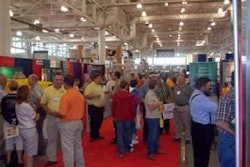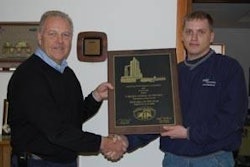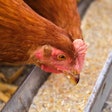The American Feed Industry Association and FEED MANAGEMENT organize and sponsor the Feed Mill of the Year program now in its 22nd year to enable feed plant managers and employees to look from the outside in at their own operations. The key categories of self-inspection—Safety, Quality, Government Compliance, Housekeeping and Plant Appearance, Productivity and Efficiency, Employee Development, and Community/Customer Relations—are important to all commercial and integrated feed manufacturing plants. However, the self-inspection provides a perspective that is most valuable to the individual teams running the operations.
For 2006, the high level of participation in the Feed Mill of the Year program, 85 feed plants throughout the USA and Canada, showed the ongoing desire of the North American feed industry to maintain an open and positive approach to the multiple challenges of current feed production. Among those challenges is increasingly stringent regulation, especially in regard to rules on restricted use protein products as part of the mammalian protein feeding ban enacted in 1997.
.jpg?auto=format%2Ccompress&fit=max&q=70&w=400) 0607FMwinners_table1
0607FMwinners_table1
The American Feed Industry Association's Facility Certification Institute (FCI) focuses on programs for the Restricted Use Protein Products (RUPP) as well as Plasma & Hemoglobin (P&H). It is an important achievement among USA feed plants that the US Food and Drug Administration continues to report very high levels of compliance with the Ruminant Feed Ban. State officials have conducted more than two-thirds, with the remainder conducted by FDA officials. The vast majority of feed plants coming under the rule continue to fall into the best of three possible levels of complianceofficial action indicated' (OAI, significant violations requiring regulatory sanctions and re-inspection), voluntary action indicated' (VAI, usually technical violations and minor lapses of recordkeeping, specifying voluntary correction), or no action indicated' (NAI, with no further action necessary).
The AFIA-FM program continues to reach out and attract a wider range of feed manufacturing operations, including both commercial feed and integrated food companies which all are strong contenders in feed safety, quality, productivity and other key parameters. There were 12 plants which achieved the Semi-Finalist ranking and 31 which achieved Honorable Mention. As in 2005, a large number of other plants in the program came very close to this upper echelon in scoring and remain strong contenders. The majority of participating plants have a well-balanced program run by professionals who are constantly monitoring their plant's performanceboth by the internal company measures and by external means, including the Feed Mill of the Year program.
AFIA's Keith Epperson and FM's editor are in the process of reorganizing the Feed Mill of the Year program to reduce the paperwork and upgrade the application form to a simpler and speedier electronic format for the future. Their goal is to increase the quality and utility of the Feed Mill of the Year program to help maintain our industry's record of safe, high quality feed for safe, high quality food.
Thanks to all participants in the 2006 Feed Mill of the Year program.

















